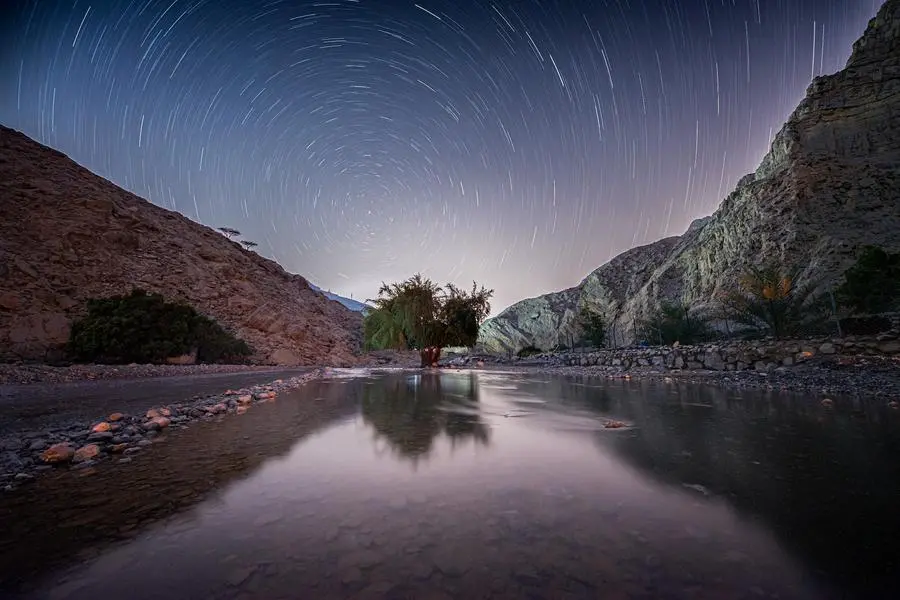PHOTO
Muscat – Oman Astronomical Society (OAS) has obtained its first scientific documentation from NASA of observing the phenomenon of the aurora borealis in the sultanate’s skies.
The Northern Lights – aurora borealis – appear in clear night skies as swirling rivers of greenish-blue light. These move and dance unpredictably; sometimes barely perceptible, then suddenly growing vivid. The auroras can be explained as an interaction of solar winds and the Earth’s magnetic field.
In a statement, OAS said a team of photographers from the society observed unusual coloured lights on the night of May 12 following a strong solar storm that impacted the Earth, leading to appearance of the aurora borealis.
The team captured images from Jabal al Sarat in the Al Hajar al Gharbi Starlight Reserve. Subsequently, they contacted NASA specialists to verify that their observations were the first scientific documentation of this phenomenon in Oman’s skies.
Qasim bin Hamad al Busaidi, Vice-Chairman of Community Communication Committee in OAS, said that coloured lights resembling the aurora borealis, caused by solar storms, were observed in the images captured.
After extensive research and verification, it was confirmed that on that particular night, the aurora borealis was at peak intensity across various parts of the Earth. This observation marks the first scientific documentation of this phenomenon in skies of the sultanate.
These lights were also visible in countries where they hadn’t been seen for many years, including Iran, Algeria, Libya and Morocco, despite their significant distance from the poles.
Ali bin Rabiah al Kindi from the OAS photography team informed that weather conditions were highly favourable to observe the sky on May 12. The monitoring location, situated in an area far from light pollution and among the highest points in Oman, provided optimal conditions. “At approximately 3:15am, we successfully photographed what scientific evidence confirms to be the aurora borealis phenomenon from the north.”
Issa bin Salem al Sheikh, a member of the Board of Directors of OAS, confirmed that following communication with Dr Elizabeth McDonald, a space physics expert at NASA’s Goddard Space Flight Center, there was extensive discussion to document observations of the aurora borealis from various global locations. The aim was to validate the observations, verify the equipment used for photography, and confirm the precise location coordinates and timing of the captures.
“The consensus reached was that the phenomenon observed in the skies of Oman strongly resembles the aurora borealis. Further research and discussions are ongoing to definitively confirm the documentation of this rare occurrence,” Sheikh added.
© Apex Press and Publishing Provided by SyndiGate Media Inc. (Syndigate.info).























